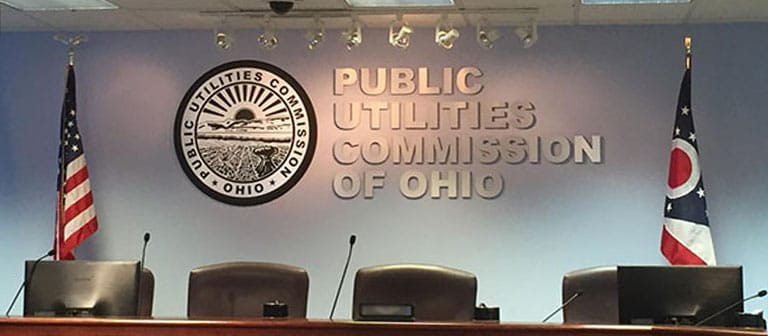Despite Reliability Failures, Energy Companies Still Seek Rate Hikes

BY NICK ROGERS
Statewide - In the wake of one of Northeast Ohio’s most damaging storms in the past 30 years – a rain and wind assault that left between 429,000 and 578,000 Citizens without power for up to a week – questions have arisen regarding Ohio energy companies’ resilience and disaster response. These companies have consistently fallen short of power outage metrics set by the Public Utilities Commission of Ohio (PUCO), and Ohio continues to rank towards the top in the United States for power outages per capita. Despite this – and despite a growing number of “riders” tacked onto customers’ bills in recent years – AES Ohio, Duke Energy Ohio, and FirstEnergy continue their quest to raise rates.
According to a 2022 report by Texas-based Payless Power, Ohio found itself number three out of the 50 US states for most Citizens impacted by power outages per capita (34,093). 21 power outages were reported that year, ranking Ohio seventh, despite the fact that Ohio ranked 24th in total power consumption. According to https://poweroutage.report/, Ohio has experienced the fifth most power outages since the year 2000.
PUCO has a two-pronged system of standards for measuring power reliability. The first is called Customer Average Interruption Duration Index (CAIDI), i.e. the average duration of a power outage measured in minutes. The second involves the average number of outages, also known as the System Average Interruption Frequency Index (SAIFI). Two annual violations in a row results in penalties to the company and/or restitution to customers.
In 2023, Duke Energy Ohio failed to meet the outage frequency standard. AEP Ohio and FirstEnergy’s Cleveland Illuminating Company failed to meet the standard for time spent getting power up and running. And while CAIDI and SAIFI do not take extreme weather events into account (the before-and-after data is published, however), Ohio residents still experienced what equated to over 1,000 hours of power loss for individual customers that year. AEP fell short of the CAIDI standard four years in a row from 2019 through 2022.
Meanwhile, as the HB 6 bribery scandal trudges forward, customers and watchdog groups are quickly growing wary of ongoing rate increase requests filed by the energy behemoths. FirstEnergy – with its “electric security plan” preliminarily approved –continues to seek as much as $500 million in investments from the state over the next eight years for grid improvements.
Spokesperson Lauren Siburkis of FirstEnergy’s Toledo Edison said, “As our infrastructure ages and as our customers are using more energy, it’s important to make investments in our electric system to keep up with the worsening storm systems that we are seeing…”
According to Toledo City Council documents and the Ohio Consumer’s Council, FirstEnergy is looking to increase its rates by a total of $1.4 billion between 2024 and 2032. Siburkis disagrees.
“We did not come up with that number and we do not know how a third party calculated that number, so it’s simply inaccurate to say it’s a $1.4 billion rate plan,” she said. The company claims that the $1 to $5 per month increase they seek would amount to only $100 million in company revenue.
At one of PUCO’s three public hearings on the matter, Toledo City Councilman George Sarantou passionately pleaded for PUCO to deny the rate increase request. “I think it’s unwarranted and it will place a huge burden on the Citizens of Toledo,” he said. Sarantou explained that unusually high electric rates have scared away many potential business startups from the area. PUCO offered 20 minutes of public comment at the hearing, but no one showed up.
In a statement provided to wtol.com, Sarantou said, “This outrageous rate increase will hurt all residential customers of Toledo Edison, as well as commercial and industrial customers.” Getting into specifics, he said, “Toledo Edison recently raised our rate by 109%. Residential customers were paying 5.9381 cents per kWh to 12.4065 cents per kWh. Why do they need another huge rate increase?”
Patricia Mullin, president of the FirstEnergy’s Ohio operations, said, “We’re committed to making the right investments to ensure a modern, more reliable grid while also keeping electric bills affordable…”
A shallow dive into FirstEnergy’s shady history regarding fraudulent “riders” added to electric bills, however, leaves one wondering how Mullin or Siburkis’ statements could be taken with anything but a grain of salt.
Duke Energy Ohio submitted a plan for a 6.5% increase in customers’ bills over three years. Duke Energy Ohio who, like the rest, is well-known for playing the rider bill game expertly, was granted a 2.4% bill increase; a monthly increase of approximately $2.77 (equivalent to $22.6 million in revenue).
AEP Ohio – ostensibly to achieve their proposed “grid advances,” is seeking an extra $2.99 a month from its customers to cover their planned $682.7 million in spending.
All due respect should be given to the on-the-ground responders working around the clock to restore power after events such as the recent northeast Ohio storm, but will these huge PUCO-approved investments and added monthly fees do anything to decrease the overall number of outages or to bolster the grid’s resilience to storms, be it through “Smart grid” upgrades or foliage management?
With now-deceased former PUCO chair/Ohio Speaker of the House Sam Randazzo and former PUCO chair Asim Haque (now Sr. VP at PJM) having been deeply imbedded in bribes and/or fraudulent rider schemes, relying on PUCO to make decisions in the best interest of Ohio Citizens seems a fool’s errand. Unless something somehow drastically changes, it appears to be business as usual between Ohio energy companies and PUCO. As always, Ohio Citizens receive the short end of the stick.




